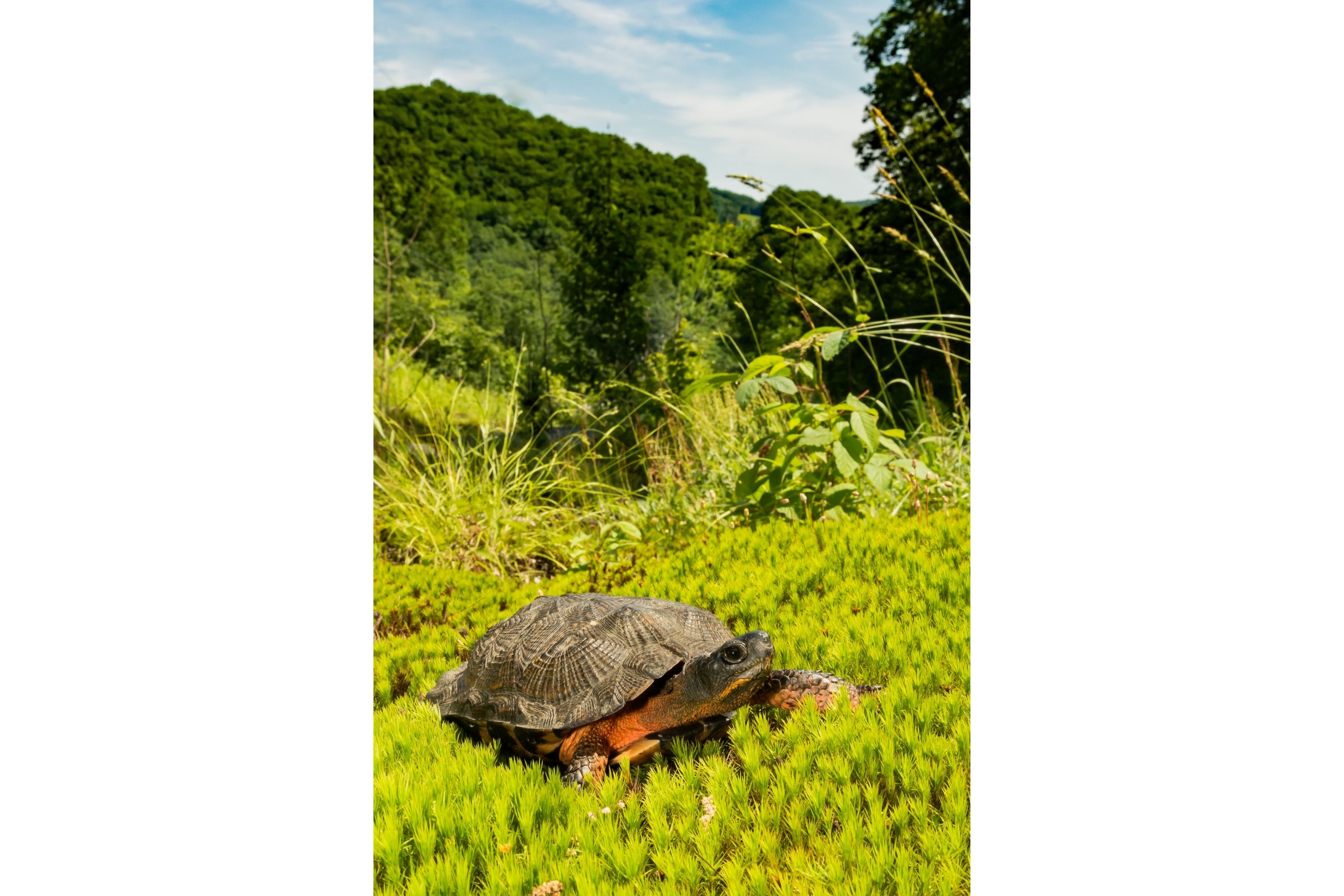Wood turtle
(Glyptemys insculpta)

Description
The wood turtle (Glyptemys insculpta) is a species of turtle endemic to North America. It is in the genus Glyptemys, a genus which contains only one other species of turtle: the bog turtle (Glyptemys muhlenbergii). The wood turtle reaches a straight carapace length of 14 to 20 centimeters (5.5 to 7.9 in), its defining characteristic being the pyramidal shape of the scutes on its upper shell. Morphologically, it is similar to the bog turtle, spotted turtle (Clemmys guttata), and Blanding's turtle (Emydoidea blandingii). The wood turtle exists in a broad geographic range extending from Nova Scotia in the north (and east) to Minnesota in the west and Virginia in the south. In the past, it was forced south by encroaching glaciers: skeletal remains have been found as far south as Georgia. It spends a great deal of time in or near the water of wide rivers, preferring shallow, clear streams with compacted and sandy bottoms. The wood turtle can also be found in forests and grasslands, but will rarely be seen more than several hundred meters from flowing water. It is diurnal and is not overtly territorial. It spends the winter in hibernation and the hottest parts of the summer in estivation. The wood turtle is omnivorous and is capable of eating on land or in water. On an average day, a wood turtle will move 108 meters (354 ft), a decidedly long distance for a turtle. Many other animals that live in its habitat pose a threat to it. Raccoons are over-abundant in many places and are a direct threat to all life stages of this species. Inadvertently, humans cause many deaths through habitat destruction, road traffic, farming accidents, and illegal collection. When unharmed, it can live for up to 40 years in the wild and 58 years in captivity. The wood turtle belongs to the family Emydidae. The specific name, insculpta, refers to the rough, sculptured surface of the carapace. This turtle species inhabits aquatic and terrestrial areas of North America, primarily the northeast of the United States and parts of Canada. Wood turtle populations are under high conservation concerns due to human interference of natural habitats. Habitat destruction and fragmentation can negatively impact the ability for wood turtles to search for suitable mates and build high quality nests.
Taxonomic tree:







